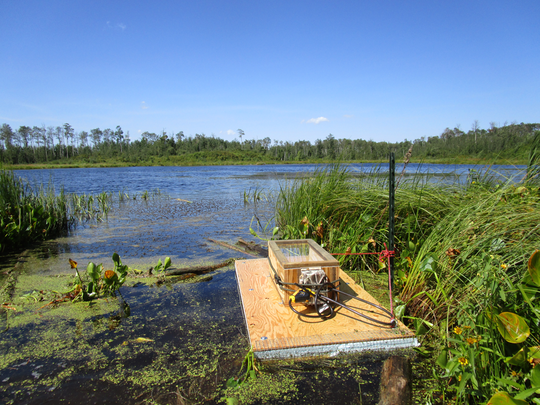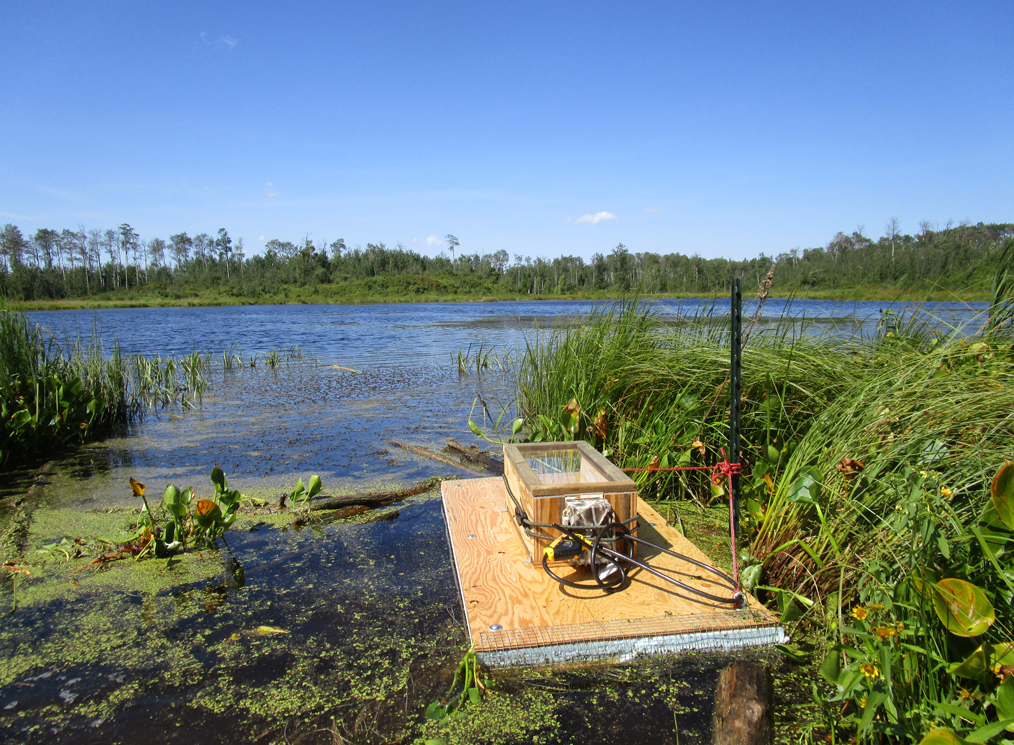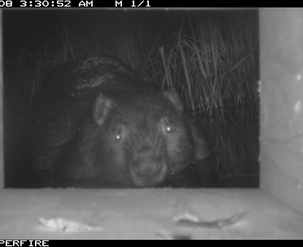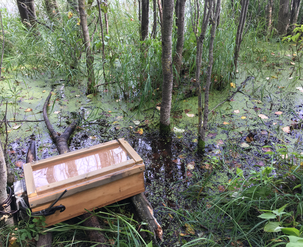More Than Meets the Eye: Semi-aquatic mammals in the Beaver Hills Biosphere

By Dr. Glynnis Hood
When people think of semi-aquatic mammals, beavers, muskrats, mink and river otters immediately come to mind. These species are dependent on freshwater habitats for their everyday activities. Globally, there are more than 140 species of freshwater semi-aquatic mammals, with six of them living right here in central Alberta’s Beaver Hills Biosphere. In addition to the well-known species, American water shrews and northern bog lemmings are also found in Alberta’s wetlands. Despite some variability in habitat selection, these species share a surprising degree of habitat overlap and interact in important ways. The presence of beavers is an important predictor of habitat use by river otters, and muskrats and mink exhibit a similar relationship. Studying these species, however, presents some challenges – apart from beavers and muskrats, the other four species are very difficult to detect.
In July 2020, with the support of the Beaver Hills Biosphere Reserve Association and the Alberta Conservation Association, I developed a study to test various methods to detect of all six species of semi-aquatic mammals in the Biosphere. My team and I placed specialized camera boxes, camera rafts, and cameras on beaver dams to detect these mammals. From over 28,000 images we have identified over 2,880 individual animals, including 27 species of birds, 20 species of small mammals, five species of medium to large mammals, one wood frog, a plains garter snake and several invertebrates. Muskrats, beavers and water shrews were the most abundant small mammals detected by the cameras, with shoreline camera boxes capturing the highest diversity of species (42 species).
Camera data helped us identify locations for subsequent environmental DNA (eDNA) sampling in ponds. When animals are in the water, they shed genetic material, which can then be detected by pumping water from the pond through a special filter that then captures material containing DNA. In collaboration with InnoTech Alberta, we are developing four DNA assays for the more cryptic species of semi-aquatic mammals (river otter, mink, water shrew, and bog lemming). These will be the first assays for these species in Alberta and will be available for other researchers, in and outside Alberta’s biosphere reserves.
We also conducted winter field surveys within all protected areas and on some private land across the moraine to map the distribution and condition of beaver lodges, muskrat push-ups and huts, and mink and muskrat tracks. Since October, we have surveyed well over 2,100 beaver lodges throughout the Beaver Hills and are so grateful to many volunteers from the Friends of Elk Island, local landowners and Augustana students who helped with the surveys.
This research increases our understanding of various non-lethal sampling methods for cryptic but important riparian species. The results will help land managers assess aquatic connectivity in the moraine and increase our understanding of how to protect the tremendous biodiversity supported by Beaver Hills Biosphere.
—
Dr. Glynnis A. Hood is Professor of Environmental Science and Manager of the Augustana Miquelon Lake Research Station, University of Alberta, Augustana Campus. Her current research focuses on wetland ecology as it relates to wildlife habitat and management. Semi-aquatic mammals are of specific interest.


